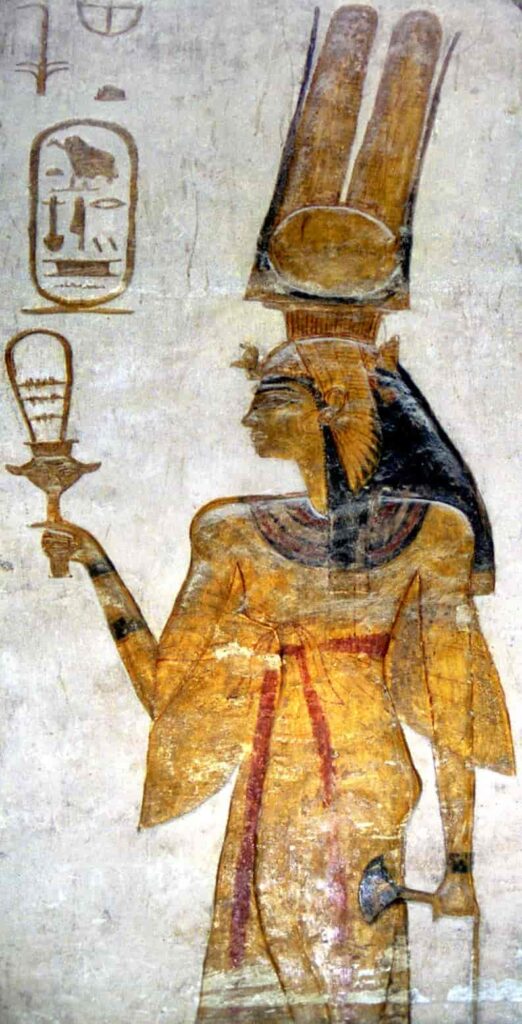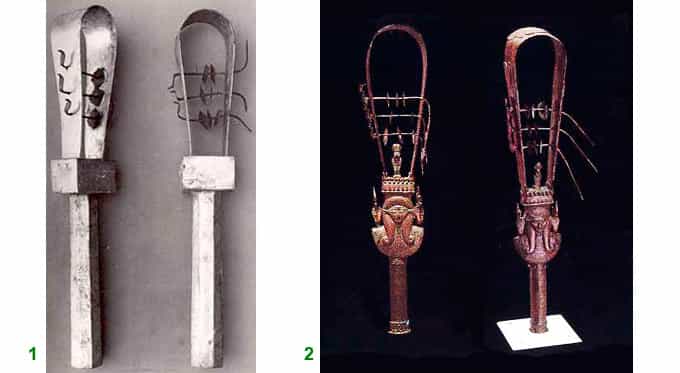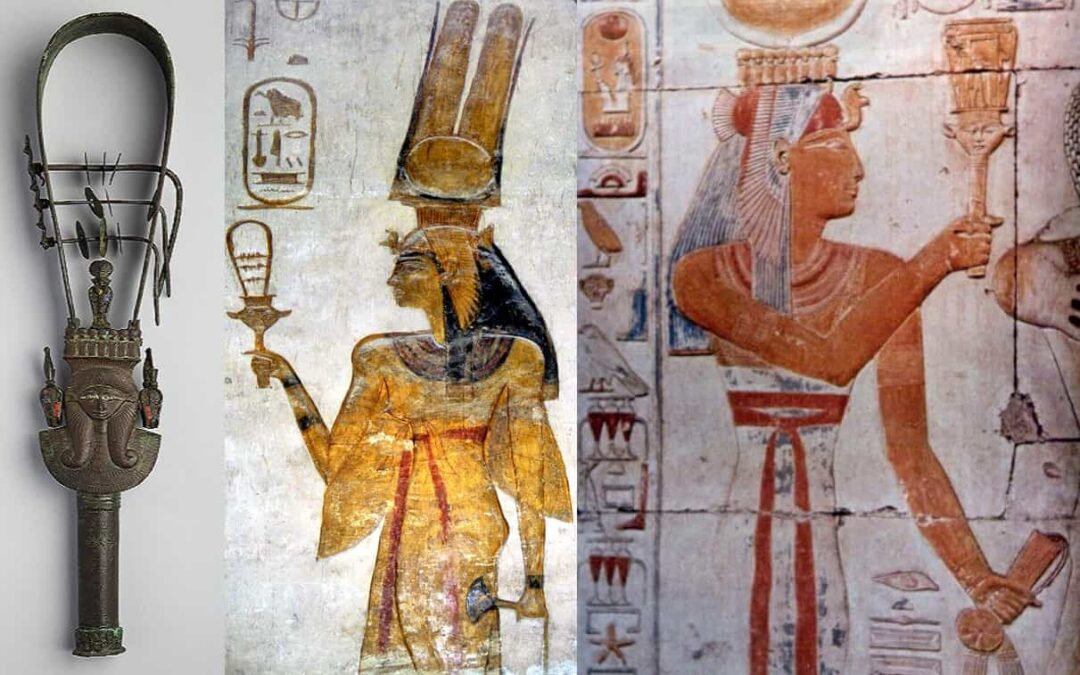The sistrum, known as the sechechet by the ancient Egyptians, was a sacred musical instrument with two distinctive forms:
Arched Form: This version featured a handle attached to eight metal rings, connected by crossed metal bands. The metallic discs were secured within this framework.
Hathoric Form: This style had a handle topped with a Hathor-shaped head, leading up to a central rectangular or lintel-shaped piece. It included two metal bands on each side, giving it a unique temple-like design.
While both types were closely linked to the goddess Hathor, the sistrum also found use in ceremonies for deities such as Amun and Isis. The soft, rhythmic sounds it produced were likened to the rustling of papyrus leaves swaying in the wind, believed to offer protective qualities.
Primarily, the sistrum was played by priestesses associated with these deities, making it a staple of religious rituals. Starting in the 18th Dynasty in Thebes, the wife of the god (initially the queen and later a royal daughter from the reign of Ramesses VI) would shake the sistrum during rituals to soothe the deity and ensure fertility.
Hathor, embodying both life-giving and destructive forces, inspired a complex worship practice. Part of her cult focused on pacifying her more fearsome aspects, with the sistrum shaken as a means of control. Numerous representations of this instrument appear in ancient Egyptian art, such as in the “Red Chapel” of Hatshepsut in Karnak Temple.
As a symbol or amulet, the sistrum signifies music, festivities, and sacred rituals.







